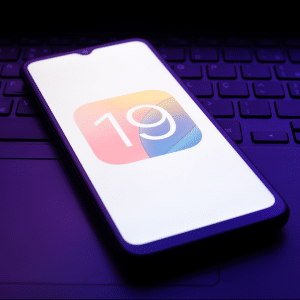
As the U.S. smartphone market matures and Apple pushes more deeply into the Chinese market looking for growth, its shareholders have learned that not every iPhone customer is worth the same to the company’s bottom line.
When Apple’s sales growth was being powered by iPhone and iPad buyers in North America, Europe and other developed markets, life for Apple shareholders was a never-ending party. That’s because rabid iPhone fans willing to wait in line for hours in New York, Tokyo or San Francisco to get the latest version of the device were also willing to pay whatever it took to get its newest, snazziest features.
Apple’s ability to satisfy those early adopters, as well as the millions of other iPhone and iPad buyers in developed markets who bought in their wake, drove the company’s stock price to $700, making it the world’s most valuable company and making many investors rich.
But after several flush years during which Apple was able to charge a hefty premium over rival devices for iPhones, the mainstream smartphone market has begun changing.
The day before Apple’s report last week, Verizon Communications, which was the second U.S. wireless operator after AT&T to carry the iPhone, said less than half of its fourth-quarter activations of the device were for the latest model, the iPhone 5.
What’s more, Verizon said it started selling some iPhones for free for the first time, something AT&T had already begun doing on older models. That’s a different scenario from rollouts of the first- and second-generation iPhones, when pricing for AT&T iPhones held firmer, longer.
That suggests that a majority of U.S. consumers who don’t already own an iPhone aren’t the types who’ll pay more for the latest feature set.
The exact revenue split between Apple and Verizon for each iPhone model is a well-kept secret, but it’s a good bet that Apple gets less for a free iPhone 4 than it does for an iPhone 5, which costs $200.
Whatever the exact difference, the trend is affecting Apple’s sales growth and profitability. For its fiscal year ended last September, iPhone sales rose 71%, helping Apple generate total revenue growth of 45%.
For the quarter ended in December, however, iPhone sales rose a much-slower 28%, even though Apple rolled out the iPhone 5 during the period.
Because the iPhone generates just over half of Apple’s total revenue, overall sales rose only 18%. That figure, along with a steep decline in a key profit metric, is what sent Apple shares tumbling last week. The stock drop worsened the hangover that Apple shareholders had been suffering since September, when the party ended and the stock began its 38% slide (as of Friday).

The China card
To boost revenue growth, Apple has begun to invest heavily in China, opening retail stores and signing contracts with wireless carriers in the world’s most populous country.
Apple’s fourth-quarter sales in China surged 67% — compared with 15% growth in the Americas and 11% in Europe — and now account for 13% of Apple’s revenue. In fiscal 2012, the company didn’t even break out its sales in China from the rest of Asian sales, which grew just 10% in the most recent quarter.
But Apple’s very success in China has proved to be a double-edged sword, one that has combined with a maturing U.S. market to take a hefty slice out of the company’s profitability.
Apple’s gross margin, which is revenue minus product costs, dropped to roughly 39% of revenue in the fourth quarter, down from roughly 45% a year earlier. Even worse, Apple forecast a range of around 38% for the current period ending in March.
While all this has been going on, rival makers of smartphones that run Google’s Android operating system have been gaining global market share against the iPhone. In the third quarter, according to market researcher Gartner, Android phones held 72% market share, up from 53% a year earlier. Over the same time, Apple’s share fell to 14% from 15%.
Last year, South Korean giant Samsung became the world’s largest seller of smartphones, and in October it unveiled a model that had a 5-inch screen, significantly bigger than the iPhone model at the time.
All of this is not to say that Apple is finished or that its stock will keep plummeting. Its strong cash position allowed it to announce another hefty quarterly dividend, which makes the stock more appealing to investors who want income. And the stock’s low price-to-earnings growth ratio is still a hit with value investors.
But a company with decelerating sales and falling margins is not nearly as attractive to growth investors as was the Apple of 2011 or early 2012. And a company that loses a base of investors will have a hard time recapturing the title of the most highly valued in the world.
USA Today











